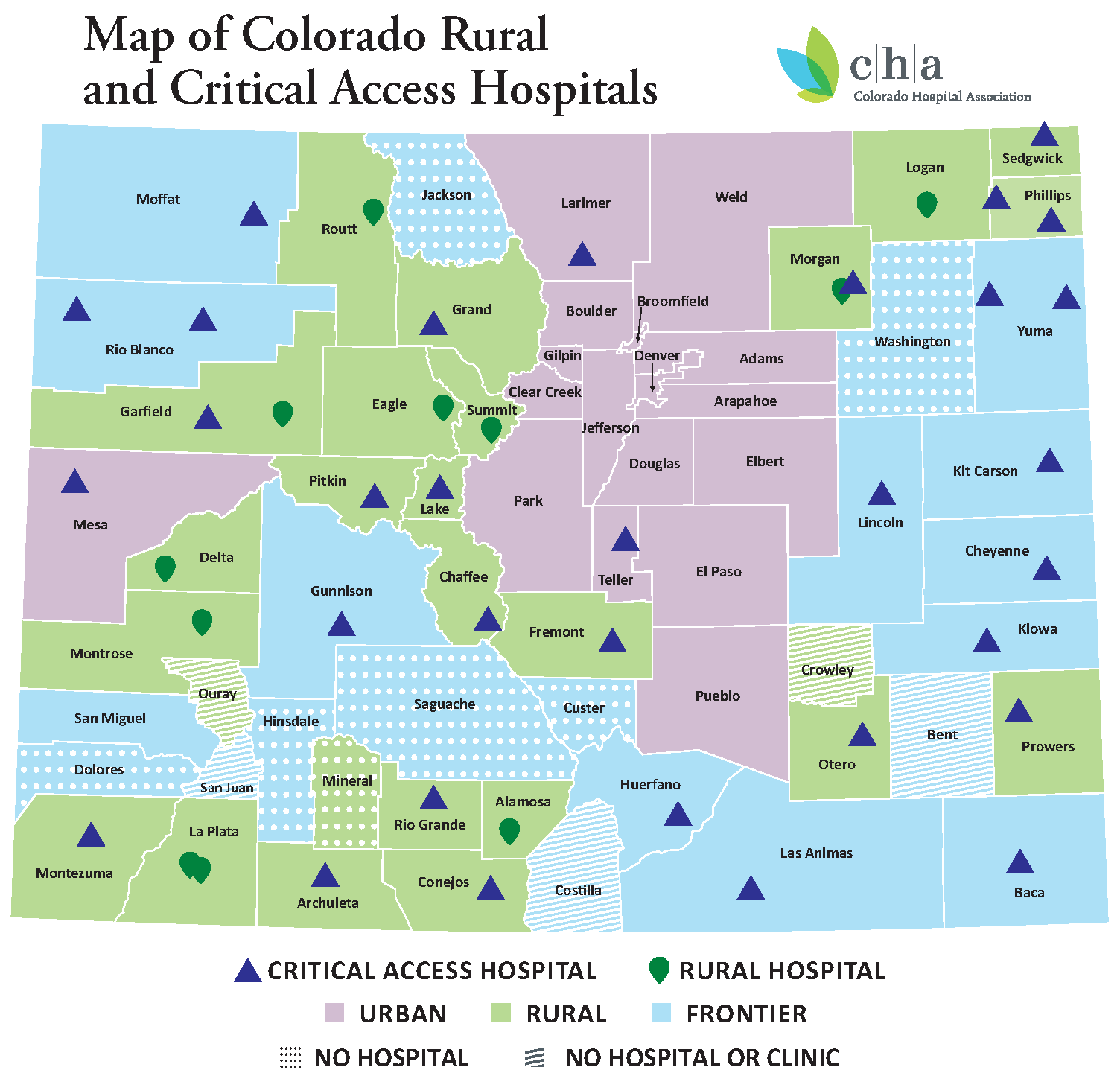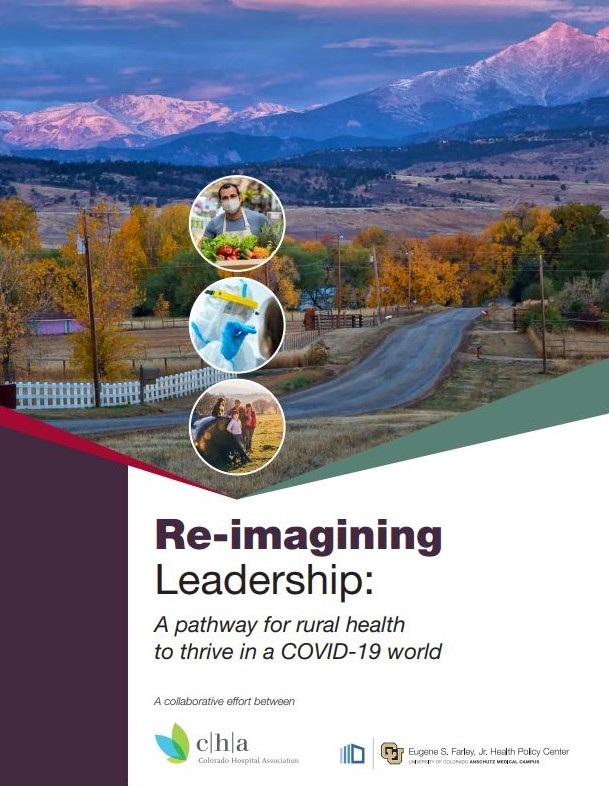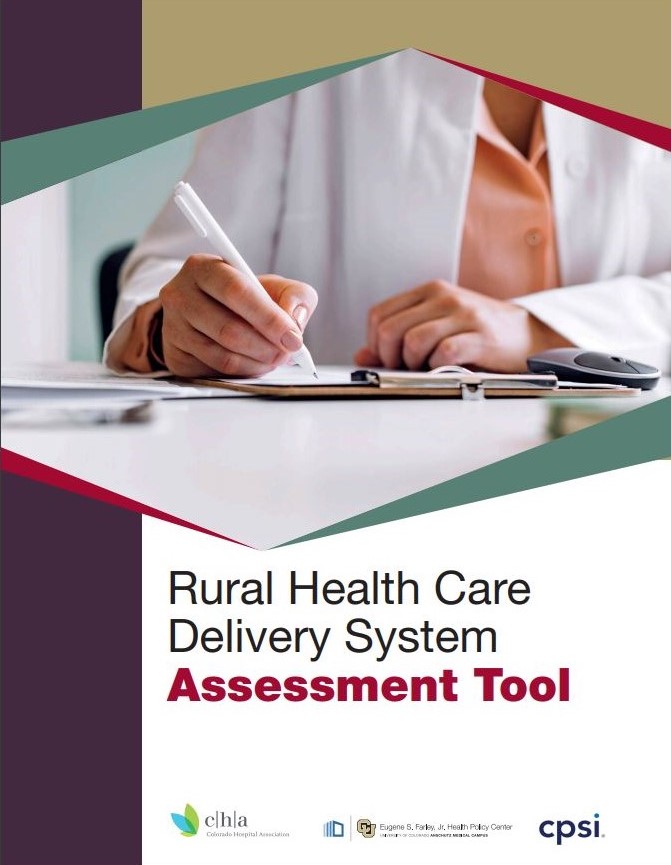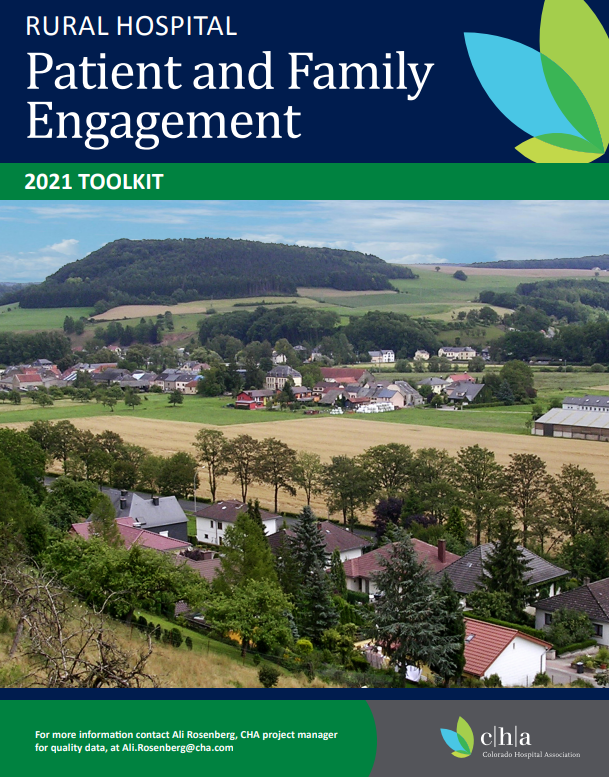Rural Health
From rolling prairies in the east to towering mountains and mesas in the west, Colorado’s rural hospitals are cornerstones of the communities they serve.
Of Colorado’s 88 acute care hospitals, half are in rural or frontier counties. Colorado has:
32 Critical Access Hospitals
11 Rural PPS Hospitals
Key Points/Hospital Perspective
- Rural hospitals are the economic engines of their communities, often serving as the largest employer and an anchor to recruit or retain other businesses, schools, and other organizations.
- Rural hospitals constantly do more with less. Because of rising costs, shrinking reimbursements, and increasing administrative and regulatory hurdles, 85 percent of Colorado’s rural hospitals provide care without sustainable operating margins.
- Your zip code should not determine your health. By providing support for rural hospitals, Colorado can ensure that our rural health care system is strong, available, and sustainable.
Colorado’s Rural Hospitals by the Numbers
In 2023, rural hospitals in Colorado:
- Cared for 34K inpatients
- Delivered 4,860 babies
- Stabilized 310K people in the ED
- Cared for nearly 500K outpatients
- Employed 16K community members
- Provided $6.6B in indirect economic impact
What’s the difference between rural and frontier?
Of Colorado’s 64 total counties, 24 are designated as rural and 23 are designated as frontier – making up 77% of Colorado’s landmass. But what does that mean? Rural counties are a non-metropolitan county containing no municipalities over 50,000 residents. Frontier counties are a county with a population density of six or fewer residents per square mile.
Demographics of Rural Colorado
- 719,343 or about 12% of the state’s population lives in rural and frontier areas of the state.
- The rural per capita income is $63,508 as compared with $70,706 for the state as a whole.
- The poverty rate in rural Colorado is 12.2%, compared with 9.4% in urban areas of the state.
- 8.7% of the rural population has not completed high school, while 7.5% of the urban population lacks a high school diploma.
- The unemployment rate in rural Colorado is 3.1%, while in urban Colorado, it is 3.0%.
- Rural reliance on public payers (Medicare and Medicaid) for health care coverage is significantly higher (45.8%) than for urban areas of the state (37.1%).
Additional Resources
- Hospital Data – available for the state, by legislative district, and by hospital
- County-Level Health and Hospital Data – available for the state and by county
- Resource Page – methodology and sources of the data



